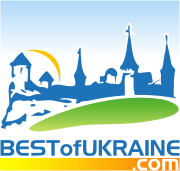Ploscha Rynok
In the days of Leo Danylo’s rule, the city considerably extended its territories and developed into a large trade center, due to its economically advantageous location. The city consisted of three parts: fortified city, outskirts and suburbs. Fortifications were located in the district of the present Knyazha Gora (Mountain).
The city was detached from Vysokyi Zamok by a deep ditch and fortified by the high billows and paling so that it would be protected against enemy attacks.
A suburb was situated in the right bank of the river Plotva, spreading out in a semi-circle on the slopes of Knyazha Gora. Separately, on the top of a steep mountain, the monastery of Saint George was situated. A trade route ran through the city, alongside numerous churches and castles. They were wooden, therefore are not preserved today.
Stone temples were built in their place, such as a Church Saint Praskovya, Saint Onufryi, Saint Nicholas and the Castle of Ivan Krestitel.
Stare Misto or Old Lviv lies in a hollow, surrounded by seven hills, as well as parks and squares.
Stare Misto is first of all an area of the Square called Rynok (Market). It is a center and focus of Lviv’s public, economic and cultural life. The history of Lviv during six centuries is indissolubly connected to this comparatively small, nearly square area of 142 meters by 129 meters. A City Council, Palaces and the houses of noble people were situated here; they were trading, holding court and carrying out punishment here as well.
From four sides of the Square in the places of the former wells the fountain sculptures were erected in 1973: Neptune, Adonis, Diana and Amphitrite.
Ploscha Rynok (Market Square) had witnessed the most essential city events since 1356, from the times of acceptance of the Magdeburg rights, which legally confirmed the rights and freedoms of citizens (their rights of self-government). With the acceptance of Magdeburg rights Lviv was no longer dependant on royal administration, but submitted directly to a King, whose interests were presented by the city’s elder (headman).
The earliest record of a City Hall dates to 1381. Then it was a wooden building with a high tower and gallery for a city trumpeter. But fires destroyed the structure. At the beginning of the 17th century a new city hall with a high octahedral tower, crowned by the gilded ferrous lion was built. But that structure is not preserved today – its tower fell in 1826.
The building, which you can see at the central part of the Square, was built in 1835 according to a project of Y.Marpl, F.Treter and A.Vondrashki. In spite of its massiveness, the city hall organically entered the architectural ensemble of Lviv, and its tower became the symbol of the city. Tower height is 65 meters. A big clock was installed in 1852. There are 400 steps leading to it. The diameter of the clock-face is 3 meters; the length of the large pointer is 2 meters and 15 centimeters.
Two lions guard the entrance of the city hall. They hold shields with the Lviv Coat of Arms, which is based on the seal of the Galychyna princes. There are city gates with towers, which testify to the defensive power of Lviv on the Coat of Arms; heaved up grates of gates show the hospitality of Lviv citizens, and the lion guards the entrance from the uninvited guests.




